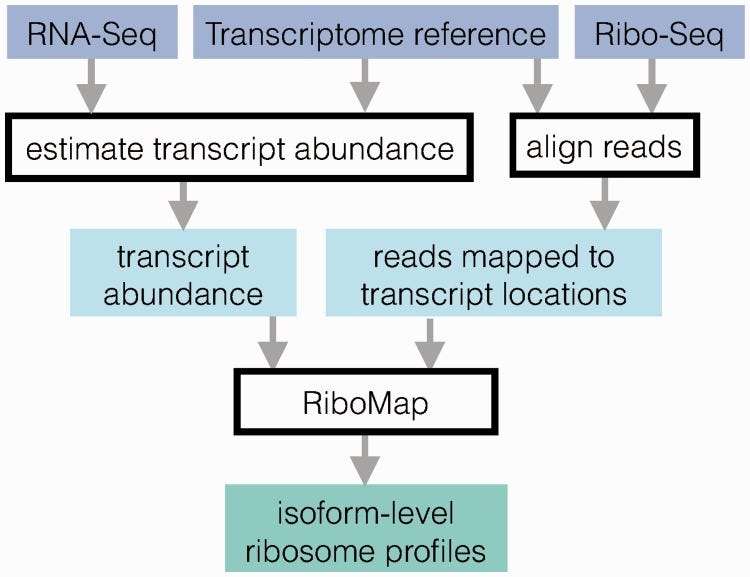Aspartame Ban:
Aspartame is an artificial sweetener (chemical formula: C14H18N2O5) common in food and beverages as a sugar substitute. The use of aspartame increased due to its ability to sweeten food without calories and not increase blood sugar.
However according to an assessment released by W.H.O (on 14-july-2023) aspartame has been classified as a possible carcinogenic to humans the IARC employs four level of classifications: ranging from group 1 which include known carcinogens all the way to group 3 including agents that are not classified as a cancer risk. Aspartame is in group 2B which is used to classify possible cancer-causing agents, which means that the consumption of aspartame within a limited quantity of about 40 mg per kilogram of body weight is considered safe for now.
In-depth reading:
https://www.who.int/news/item/14-07-2023-aspartame-hazard-and-risk-assessment-results-released
RIBOMap:
In order to study the process of translation of mRNA into protein at a genome-wide scale a technique called ribosome profiling also known as Ribo-seq is employed. In order to address the challenges that may occur when trying to quantify the data from ribosome profiling, RIBOmap a computational method and software was developed. Using the Bayesian framework (a statistical approach based on Bayes’ theorem) it is able to calculate translation rates for individual genes by estimating ribosome density on mRNAs.
In the latest breakthrough by researchers at MIT and the Broad Institute of MIT and Harvard, one can pinpoint the precise location of the site of production of proteins within intact cells and tissue.

This technology is promising as it is believed that it can aid in the comparison between healthy and diseased tissues. Additionally, further development in such tools may open the door to eradicating and fine-tuning diseases and processes at translational levels.
In-depth reading:
https://www.ncbi.nlm.nih.gov/pmc/articles/PMC4908323/
https://www.cs.cmu.edu/~ckingsf/software/ribomap/
https://news.mit.edu/2023/scientists-pinpoint-where-thousands-individual-proteins-are-made-0714
https://www.science.org/doi/10.1126/science.add3067
Threads:
If you have been on the internet or more precisely Instagram in the past month you have probably heard of Threads, META’s latest venture which is a text-based conversation app rivaling Twitter for users.
Despite threads amassing about 100 million users in its first week security concerns still remain as it remains unclear how the company handles user’s private data due to which the app hasn’t been launched in the European Union.
However, some say that threads has a higher chance of outlasting Twitter given the platform is owned by Meta which has a strong monetary hold as compared to Twitter which continues to relentlessly increase revenues and cut back on losses by monetizing any and every part of the user experience.
In-depth reading:
https://about.instagram.com/blog/announcements/threads-instagram-text-feature
TauTangles:
Many neurodegenerative diseases like Alzheimer’s can be characterized by the presence of Tau tangles an abnormal aggregation of the protein Tau that occurs within the nerve cells. Under normal circumstances, Tau proteins are essential for the structure and function of neuron cells. However, in the case of neurodegenerative disorders Tau undergoes abnormal modification forming insoluble tangles.
Recent studies by MIT researcher has revealed that Tau proteins are flexible which allows them to change their conformation, the central core of the protein is surrounded by a structure that they dubbed the “fuzzy Coat” which seems to protect the floppy segments around the center from aggregating together, lack of the fuzzy coat increases the speed of aggregate formation.
By identifying the process of formation of these fibrils’ researchers can work on formulating a potential cure.
In-depth reading:
https://news.mit.edu/2023/how-tau-tangles-form-brain-0714
https://news.mit.edu/2022/how-tau-proteins-tangle-0527
https://www.science.org/doi/10.1126/sciadv.adh4731
Editors note:
Thank you so much for reading this month’s issue of The S.T.E.M Report. We will continue to improve this newsletter. Make sure to subscribe to keep up with the latest releases.
If you have any comments, revisions, or suggestions please comment them down below!




